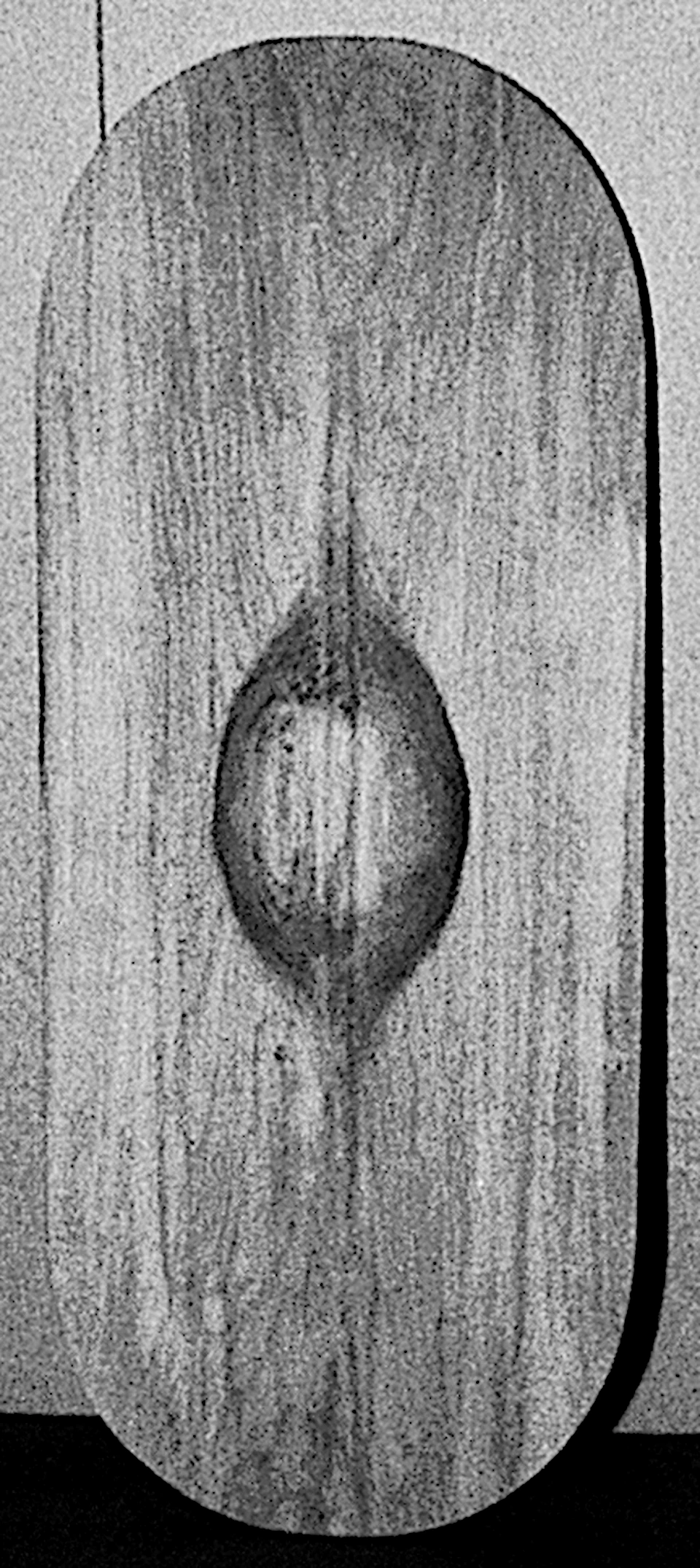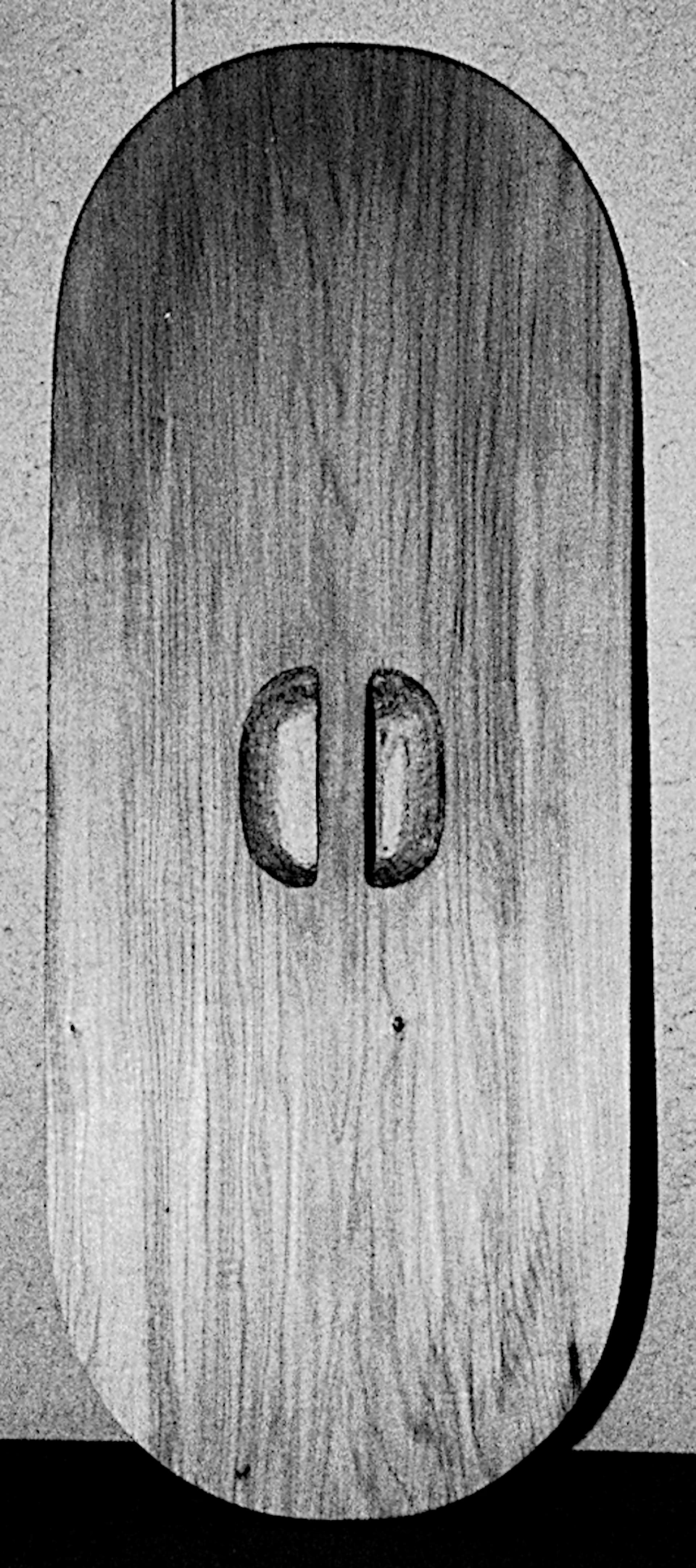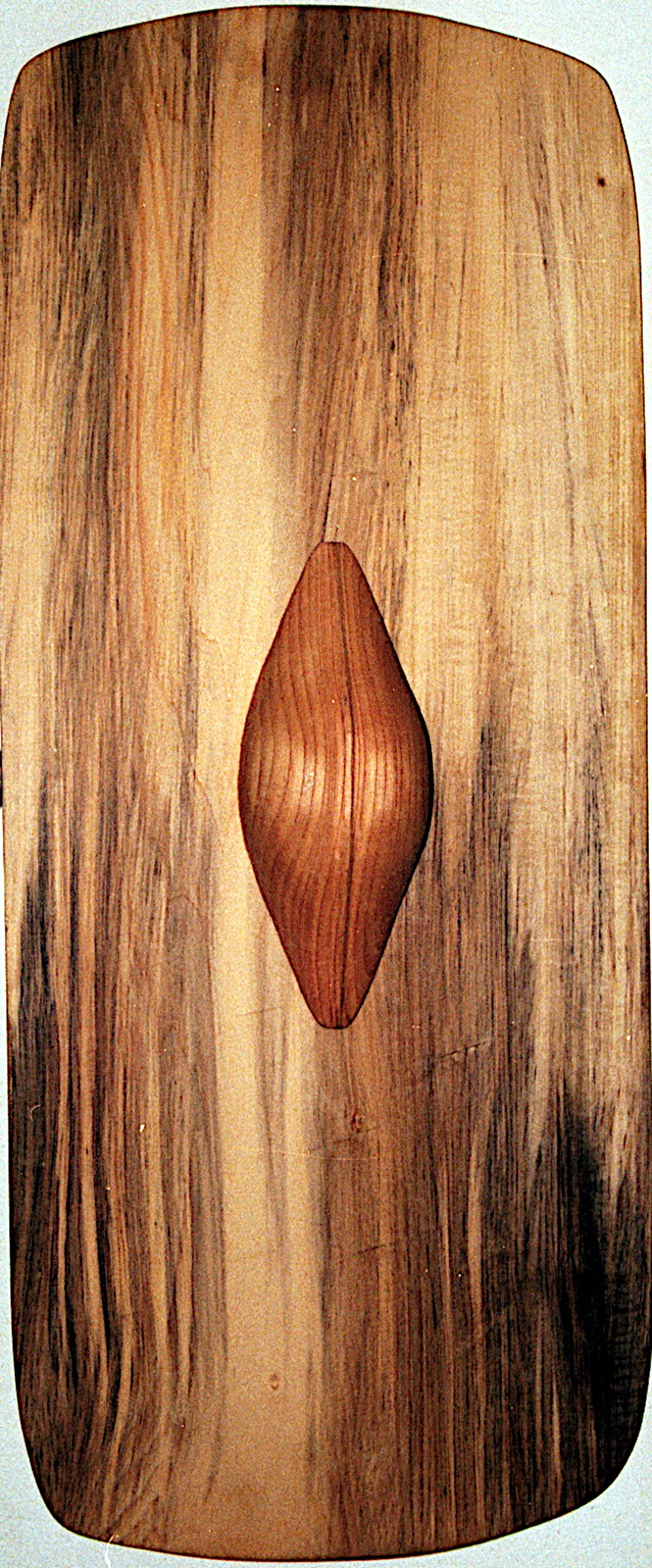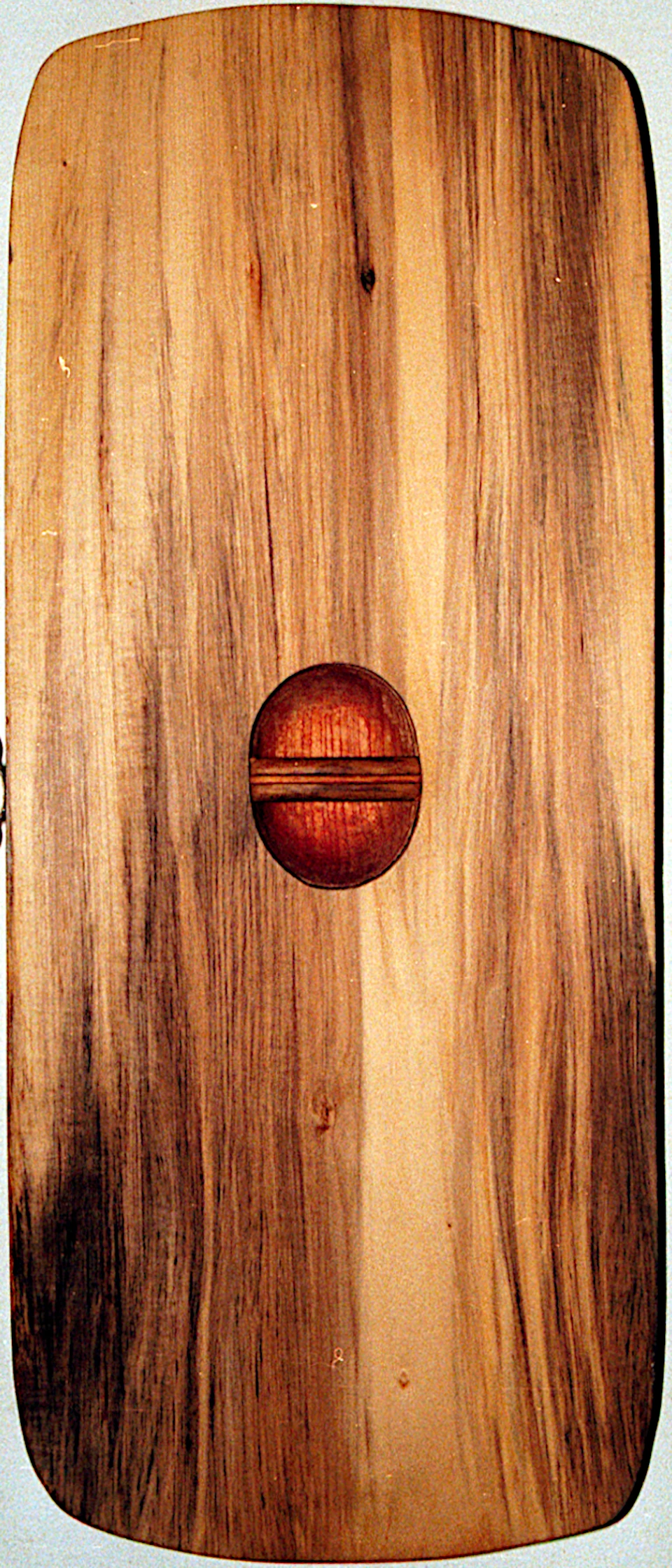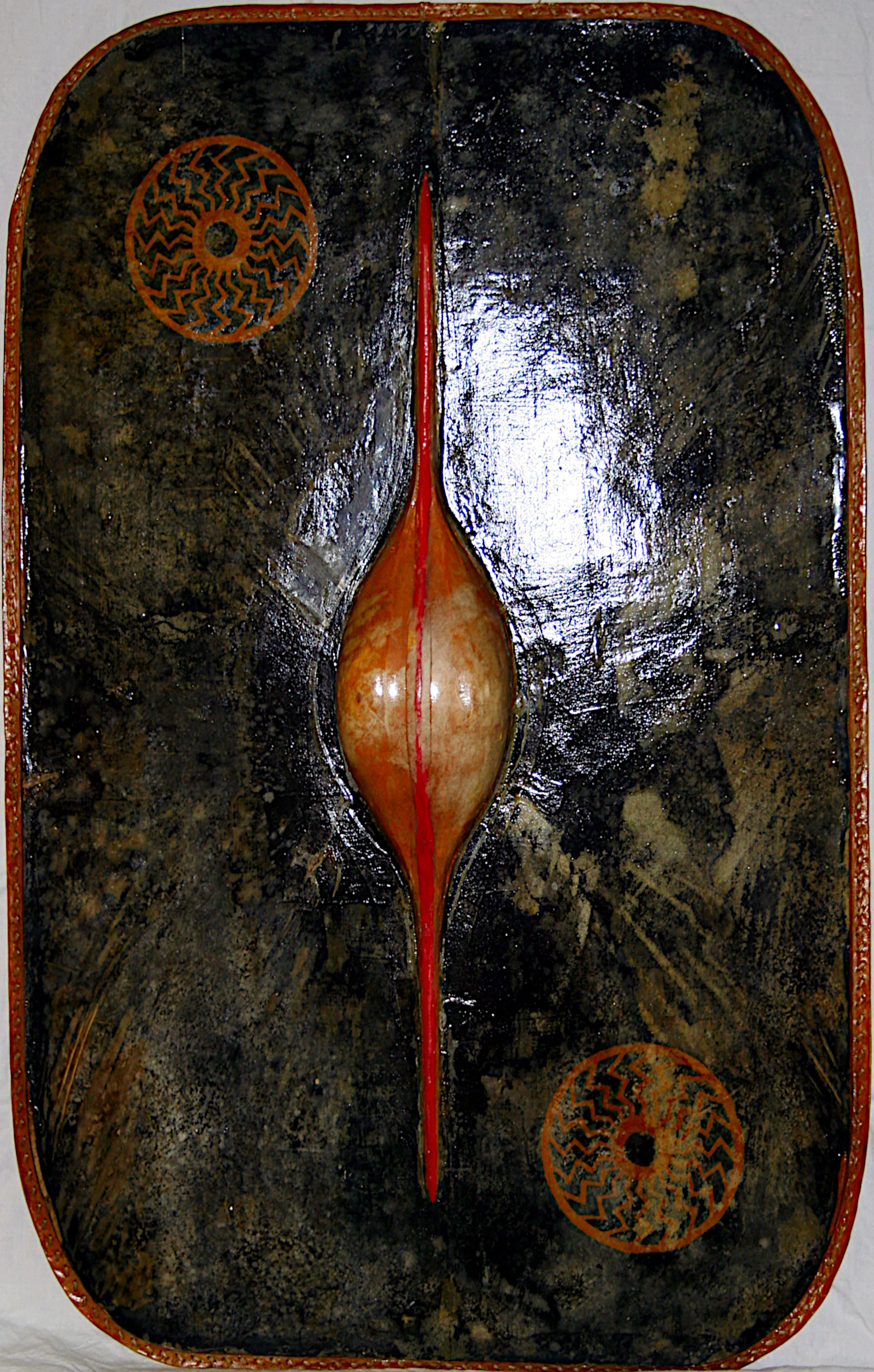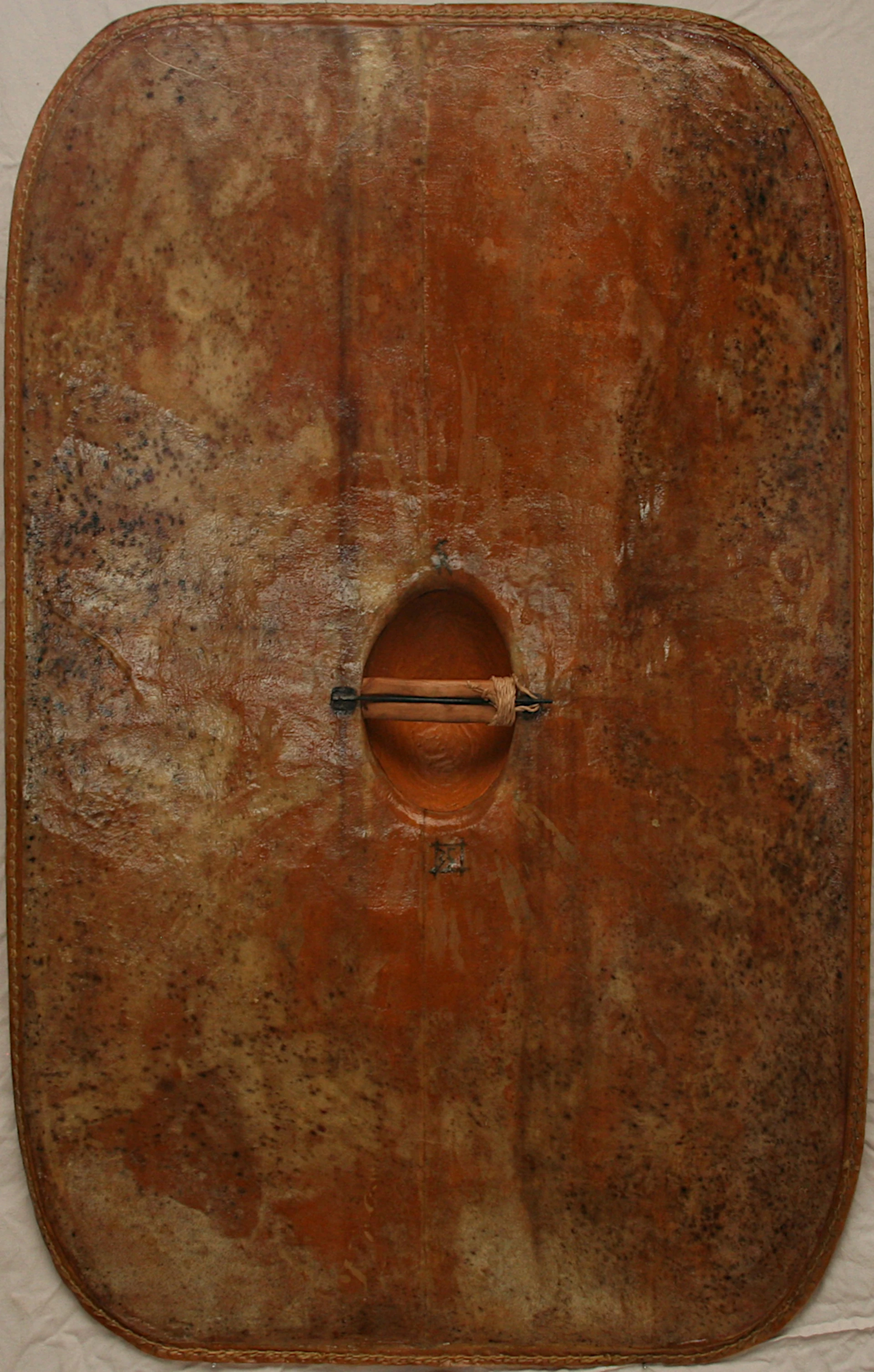Extract from the visit report
Extract from Lars Balleby's visit report from the National Museum's department in Brede, 8 April 2010.
Purpose: Primarily to investigate whether the shields from the Hjortspring boat curved at any joints and whether the thickness of the shields decreased from the centre towards the edges.
In addition, to obtain as much information about the shields and their accessories as possible.
I was very well received by the conservators Poul Jensen and Inger Bojesen-Kofoed (IB-K). The latter, who was responsible for the Hjortspring boat and its wooden accessories, had retrieved 10 shields, a box of handles and a few boxes of shield dents from storage. IB-K very much regretted that they did not have the financial means to continue the conservation work that had begun. This was evident in shield no. A1, where the conservation of half the shield had been stopped.
Apart from the two shields that had been exhibited at Sønderborg Castle, none of the shields had been completed by the conservators.
IB-K had done a great deal of work to be able to help with the requested information, but as neither she nor Poul Jensen were archaeologists, it was limited what additional information they could provide.
IB-K also said that it was a lucky time for me, because in a short while all the shields will be transported to an old bunker, as they no longer have storage space for them in Brede. Unfortunately, there is no air-conditioning in the warehouse in Brede and certainly not in the bunker.
In general, it is impossible to say whether the shields were originally curved. At the time of recording, they had all been placed on lead plates.
Apparently, all the shields decrease in thickness from the centre towards the edges.
Due to time and the initial method of preservation, all the figures given below should be treated with caution and can be used primarily as ratios.
The following shields were measured: A127a, A105, A37, A119, A64, A120, A1, A121, A85 and one that had no number.
This is followed by a series of tables with measurements. [3]
Balleby
From the Members folder
Descriptions and dimensions for shield plates. PDF
Descriptions and measurements for shield bosses.
The shields shown here are the ones we have completed. There may be more to come, to show other ways of making shields. The first two of the ones shown here are made with one and two pieces of shield plate respectively. We have also found shield plates made with more than two pieces of linden wood[4] and with different assembly methods.
We have used shields to practice the technique of working with thin sheets of linden wood. This has resulted in several unfinished shields. They are used in the workshop to show the construction of a shield.
It is the only shield in the Hjortspring find that is made from one piece of wood. the shield measures approximately 800 x 330 mm.
Note: The grip on the found shield was across the shield, as on all the other shields, a very vulnerable construction! So here there is a deviation.
Shield with separate shield boss and handle
Shield plate in one piece of wood
This shield is made with the shield plate made from a piece of wood, like most in the group of long, narrow shields - length/width > 2. On this one the ratio is 2:3.
The shield boss is glued (with resin glue) to the shield plate and secured with two dowels from the back.
The handle is ‘turned’ into a circular groove in the oval hole for the hand. The grip could be secured against coming loose in several different ways:
- Resin glue in the furrow.
- A triangular wooden strip glued into the groove behind the handle.
- Nails through the shield plate and at the edge of the handle ‘’thread stud‘’, see shield #35 below.
According to Peter Vang Petersen, Curator at the National Museum of Denmark, the shields were covered with rawhide (although we used calf parchment - ‘drum skin’ - for our copy of shield no. 35).
The statement came in connection with a lecture, 2009-04-22, about the finds in Nydam Mose, where small remnants of leather have been found on some of the shield boards, which in themselves are too thin to provide any kind of protection (similar to the shields from the Hjortspring find).
Shield plate made of 2 or more pieces of wood
Shield #35
The shield plate of shield #35 is made of 2 pieces of linden wood joined together with 4 dowels and glued with resin glue.
The shield boss is made from a block of lime wood and glued to the assembled shield plate with resin glue and secured with 4 dowels, 2 in each half of the plate.
The shield boss is extended with a moulding at both ends, which is cut out of the shield plate.
The handle on the back is turned into a groove in the edge of the shield plate, as explained above. As the only shield in the find, this shield has secured the handle with two iron nails that go through the shield plate in such a way that the edge of the handle ends, with a semicircular notch, is blocked from turning. One rivet has a soldered (brazed with copper) iron wire that rests on the other rivet, where it is secured with a binding.
The shield is painted, which is not justified in the Hjortspring find. However, people in the Celtic Iron Age were fascinated by patterns, which is why the front of the shield also features two sun symbols - this pattern was found in the bog and was also used for the front support between the horns on Tilia.
The shield is covered with glued calf parchment on both sides and with edge stitching outside the shield. A bent strip of parchment is used for the stitching so that there are four layers of parchment. The sewing stitches are of the same type as those used to sew Tilia, i.e. self-locking.
The glue is ‘harelim’ (a glue made from the fur and skin of small animals). Both glue and parchment are sensitive to moisture, so the surface is protected by boiled linseed oil (linseed oil varnish), which over time turns into a lacquer-like surface.
No skins of any kind have been found in Hjortspring Mose, but the chemistry of the bog does not allow this either. It is fair to say that the shields have little value as protection as they have been found, with a plate thickness of around 5 - 8 mm.
The only find of anything resembling a skin covering is a find in Borremose. A reconstruction of a shield with a skin covering like this find can be seen at the museum in Års.
The complete description of the production of this shield can be found in the Member folder, section 6.02.4
Trials with leather covered shields, conducted by Lejre Test Centre, an extract can be seen here in section 6.02.4.1
Trials with bows and arrows, conducted by Lejre Test Centre, an extract can be seen here in section 6.02.4.2
The Roman author Publius Cornelius Tacitus (ca. 56 - 120 AD):
Describes in Germania the manners and customs of the Germanic tribes, a few of which can be related to the Hjortspring find:
6,1:
(...)
Even the horsemen make do with shield and framea[1]. The footmen also have throwing weapons - each man several - which they hurl enormously far, naked or wearing only a light cloak. There is nothing ostentatious about their armour, only that they adorn their shields with the gayest colours [2].
(...)
6.4:
(...)
Leaving your shield on the battlefield is a particularly dishonourable act.
(...)
This article is pieced together by




